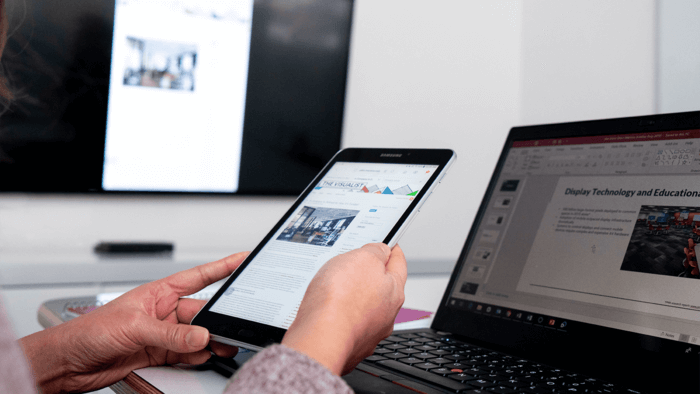So, there I was.
Many years ago, before the pandemic forced all of us to get more familiar with virtual classes and meetings, I was teaching an online course for a company in California. I saw that a student had logged on late, which wasn’t at all unusual since we are talking about students.
It also wasn’t unusual because, at this time, the link to the class was widely shared with clients and prospects so that they could drop in to learn from our institution.

I always kept the chat room open, so if someone needed to ask a question, they could quickly ask it. The chat room was set up so every attendee could see every comment. My belief was that this best facilitated the exchanging of ideas, knowledge, and experience. It had never been a problem.
And that was about to change.
A comment popped up in chat. I read it.
Without going into too much detail, the tardy student posted a very inappropriate message with a link and, before I could kick them out of the chat, they were gone.
Everyone saw it and the questions started pouring in.
“What the heck was that?”
“Did THAT really just happen?”
“What happens if I click on that link?”
All I could do was quickly think of an apology, make sure everyone knew they shouldn’t click on the link, and try to get back to the topics at hand.
Luckily, no one click on the link (to my knowledge), and I was able to get the class back on track.
This event has never escaped my memory since it gets more and more relevant with each day. There are some key takeaways from this scenario that, believe it or not, apply to today’s meetings and security best practices.
6 Ways to Improve your Meeting Security
1. Assess Your Meeting Technology Stack
Don’t try to use something for personal use in commercial settings. Translation, free stuff isn’t always secure. After this incident, we had to dig into our piggy bank and purchase an enterprise-grade product.
2. Create Unique Meeting IDs
Since we weren’t using an enterprise-grade platform, it gave you the ability only to generate a handful of meeting IDs. These got used repeatedly. Even worse, we had very relaxed policies when it came to sharing these links.
3. Use Passwords, No Exceptions
Say what you want about passwords, they have a purpose, and they are better than nothing. Since we couldn’t generate unique sessions, we also couldn’t generate unique passwords for the students. Once we upgraded to an enterprise-grade solution, we were able to not only create unique IDs and passwords, we were able to create a public link where guests could still attend but could only watch.
4. Roll Call!
You’ll usually know most of the participants in the meeting, but always do a quick roll call for any “guests” or random phone numbers who show up at your meetings.
5. If Available, Use the Waiting Room
The waiting rooms give you the option of filtering out who can and can’t attend your meetings.
6. If Your Meeting is Compromised
End it! Immediately! No exceptions. Mute everyone and let them know the meeting is ending because of a security violation. Then immediately report the issue to your IT team.

I hope these tips help you avoid any future issues with a compromised meeting.
Do you want to learn more about Solstice and how it can be securely implemented across various meeting spaces and settings? Reach out to get a product demo or start your free trial.
